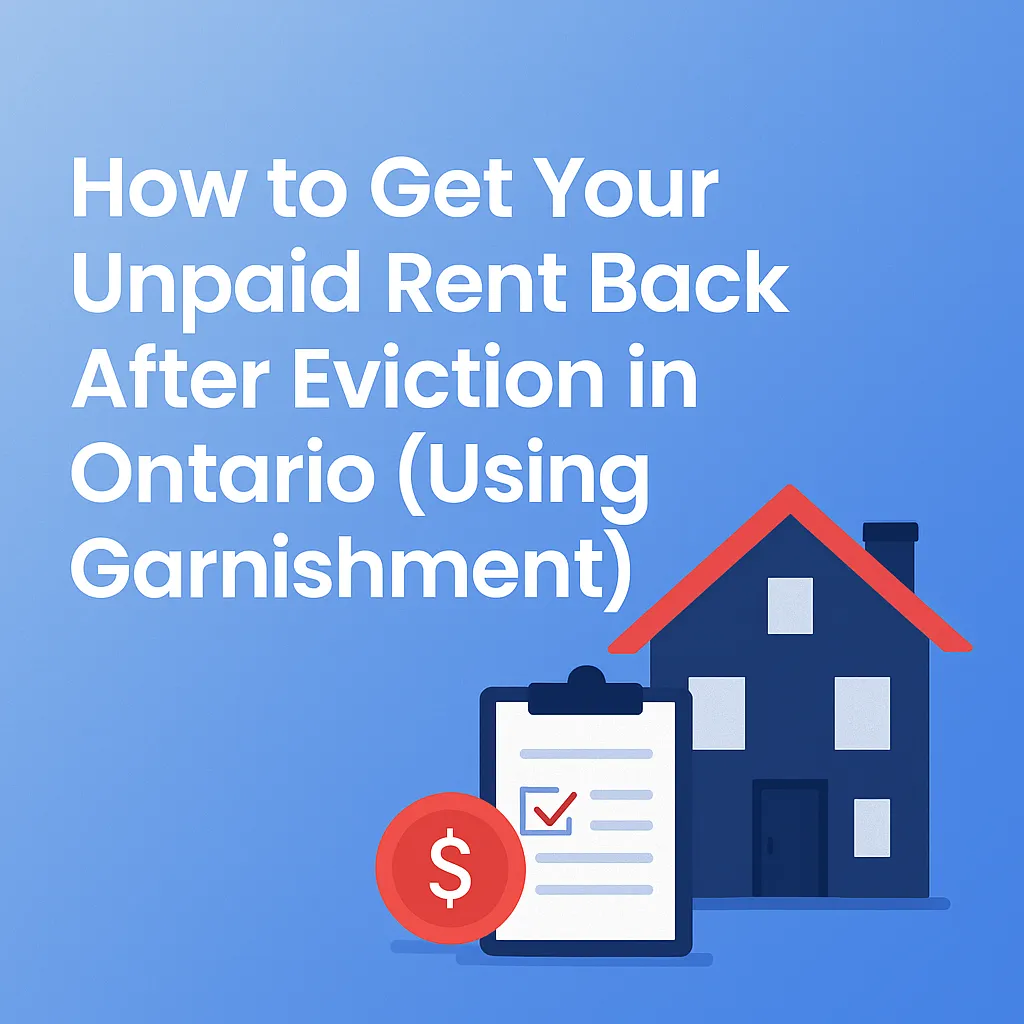Intro
Evicting a tenant doesn’t always mean recovering the unpaid rent. In Ontario, even after the Landlord and Tenant Board (LTB) grants you an eviction order with arrears, you must take further legal steps to actually collect what’s owed. This blog outlines how garnishment and other enforcement tools through Small Claims Court can help landlords recover unpaid rent after eviction.
Why It Matters
Thousands of Ontario landlords are left unpaid after legal eviction, with arrears sometimes exceeding the $35,000 limit of Small Claims Court. An LTB ruling confirms what is owed, but does not enforce payment. Small Claims Court provides landlords the tools to enforce judgments (up to $35,000), including garnishment and liens, to finally collect on their losses.
Who It Matters To
- Landlords: Who have obtained LTB orders for unpaid rent.
- Paralegals/Lawyers: Who help landlords recover debts.
- Tenants: Who should understand the legal impact of unpaid arrears.
Step-by-Step: Enforcing an LTB Order via Garnishment
1. Obtain an LTB Order
File Form L1 (Eviction & Rent Arrears) with the LTB. If successful, you will receive an enforceable order with the amount owed.
2. Transfer Order to Small Claims Court
To enforce, file a Plaintiff’s Claim with the Small Claims Court, referencing the LTB order. This turns the order into a judgment you can act on. Note: The Small Claims Court can only enforce judgments up to $35,000.
3. File for Garnishment
You need:
- Court judgment from Small Claims (up to $35,000)
- Debtor’s employment or banking info
- Completed court forms
4. Serve Employer/Bank and Debtor
Serve the garnishee (employer or bank) and then the debtor within 5 days. Missing this step voids your application.
5. Start Wage or Bank Garnishment
- Wages: Up to 20% of debtor’s gross income
- Bank: Bank freezes and remits available funds
6. Renewal or Termination
Garnishments can be renewed (Form 20E.1) or terminated when paid in full (Form 20R).
Other Debt Recovery Tools
A. Examination Hearing
If you don’t know where the tenant works or banks, request a hearing to ask under oath. Use Form 20H and request financial disclosure.
B. Report to Credit Bureau
Use a service like FrontLobby/Openroom to report arrears to Equifax/TransUnion. It shows as a derogatory mark on the tenant’s credit report.
C. Place a Lien on Assets
Register a lien through the Personal Property Security Act (PPSA). With skip tracing, you can lien cars, property, or valuables.
Real Life Scenario
Case: A Peel landlord secured an LTB order for $12,000. The tenant moved cities and ignored contact. A paralegal used a wage garnishment strategy, forcing the new employer to withhold 20% of each cheque. Within 6 months, the landlord recovered nearly all arrears.
FAQ
Q: Can I garnish ODSP or CPP? A: No, those are exempt from garnishment.
Q: What if I don’t know where the tenant works? A: File for an Examination Hearing to get employment and banking info.
Q: What if garnishment doesn’t work? A: Consider reporting to credit bureaus, asset liens, or hiring a collection agency.
Conclusion
Recovering unpaid rent doesn’t stop at eviction. Using Small Claims Court, Ontario landlords can leverage wage garnishment, bank garnishment, and liens to enforce LTB orders and collect what they’re owed—up to $35,000. With the right tools and legal support, financial recovery is possible.

